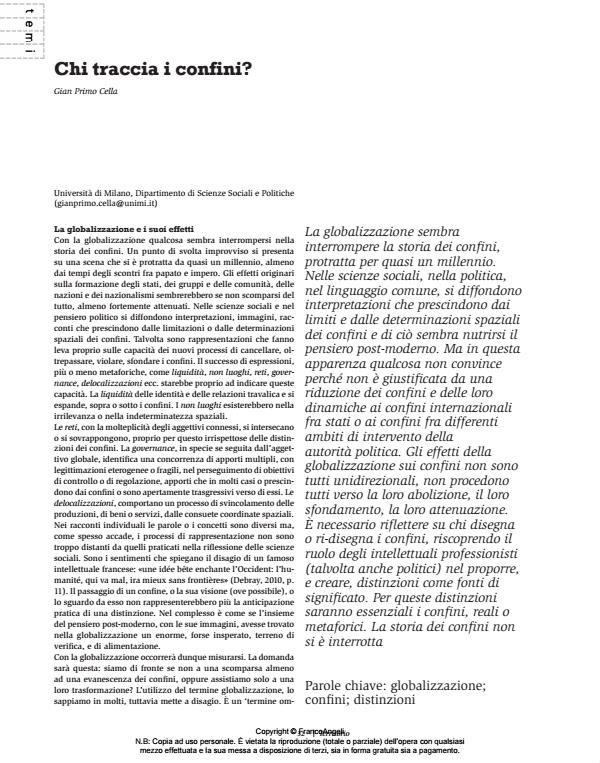Who draws the borders?
Journal title TERRITORIO
Author/s Gian Primo Cella
Publishing Year 2014 Issue 2013/67
Language Italian Pages 4 P. 32-35 File size 153 KB
DOI 10.3280/TR2013-067005
DOI is like a bar code for intellectual property: to have more infomation
click here
Below, you can see the article first page
If you want to buy this article in PDF format, you can do it, following the instructions to buy download credits

FrancoAngeli is member of Publishers International Linking Association, Inc (PILA), a not-for-profit association which run the CrossRef service enabling links to and from online scholarly content.
Globalisation seems to be interrupting the history of borders, which has been in progress for almost 1,000 years. Interpretations which are not based on the spatial limits and determinations of borders are spreading in social sciences, policies and everyday language, and post-modern thinking seems to gain nourishment from this. However, there is something which fails to convince in this perspective because it is not explained by a reduction in borders and in their dynamics on international borders between states and on the borders between the different areas in which political authority acts. The effects of globalisation on borders are not all in the same direction. They do not all move towards abolishing them, breaking them down and reducing them. We must think about who draws or redraws borders and rediscover the role of professional intellectuals (sometimes also politicians) in proposing and creating distinctions as sources of meaning. Borders, real or metaphorical, will be essential for these distinctions. The history of borders has not come to a halt.
Keywords: Globalisation; borders; distinctions
- Urban and Transit Planning Iacopo Zetti, Maddalena Rossi, pp.171 (ISBN:978-3-030-97045-1)
Gian Primo Cella, Chi traccia i confini? in "TERRITORIO" 67/2013, pp 32-35, DOI: 10.3280/TR2013-067005